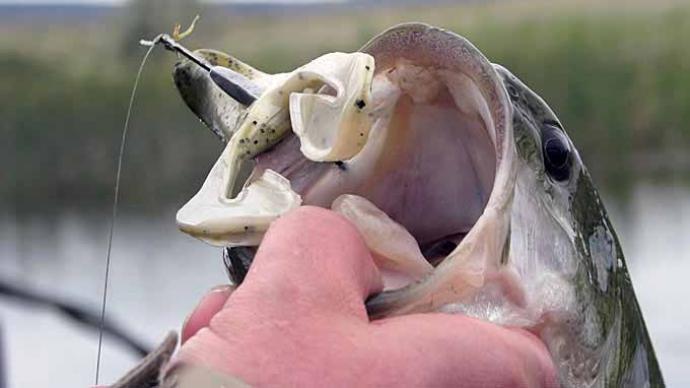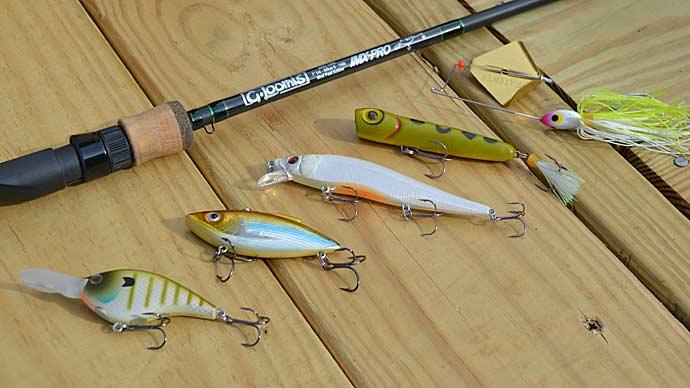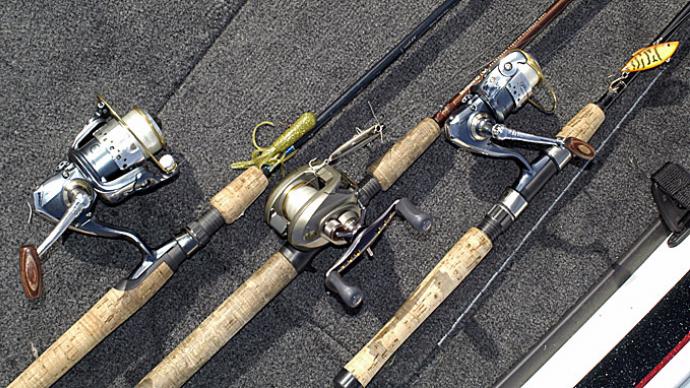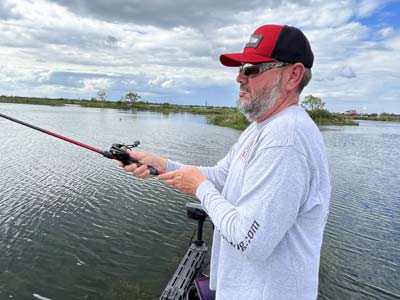
If you've ever watched professional bass anglers in action, it's a sight to be seen. Their casting accuracy and efficiency are unmatched, and they can drop a bait in the smallest openings or launch lures out of sight. They are masters at casting; much comes down to years of experience and plenty of practice.
Professional anglers Greg Hackney, Mark Rose, and Andy Montgomery are some of the best in the world with a rod and reel, and they share some tips for improving your casting efficiency and distance.
Practice Makes Perfect
The simplest way to get better at something is to practice, whether at home or on the water, and all three pros mentioned that as something you can't overlook.
"I got fussed at a lot as a kid casting and pitching into coffee cups," began Montgomery. "Fishing differs from sports because you can't lift weights and expect to get better; nothing beats practice."
Hackney supported this idea and said he got in his yard and practiced as often as possible in his early years.
"The best thing to do is get in the yard, tie something heavy enough to cast, and get comfortable with it," he said. "Get in the yard and air it out. Don't be afraid of backlashing; you'll backlash, but you need to keep at it."
He said putting in a can in the yard is excellent for practicing short-range techniques like flipping and pitching, but it also helps for further distances.
"You want to be able to hit that can cast after cast repetitively," he said. "I remember when I was taking my kids fishing, and I'd outfish them, and they'd wonder why, but bait presentation is the number one thing to catch more fish. The lures were the same, but how I presented the lures to fish would get more bites, especially with shallow water techniques."
Maximizing Distance On A Cast
Some techniques and lures are best with a long cast. For example, consider deep diving crankbaits where a longer cast means the bait will run deeper and stay in the strike zone longer. Another crucial time when distance matters is when trying to reach fish breaking on the surface in the distance. For these situations, every additional yard of distance helps.
Hackney's best tip for casting distance may sound counterintuitive, but he prefers to eliminate braking systems or magnetic controls on his baitcast reels.
"All those things designed to keep you from backlashing will impede distance," he said. "I turn all that stuff off and control the line with my thumb. You want that reel to free spool and try to figure that out and let it roll. This helps with casting distance and skipping baits far under docks."
Rose believes using both hands for casting is a top priority. "I can't cast well with my left arm, but using my right hand to guide it is helpful," he said. "Doing that, I can cast with both hands depending on where I'm in the boat. Using both hands as strength and support will allow you to make better casts every time."
Casting Accuracy
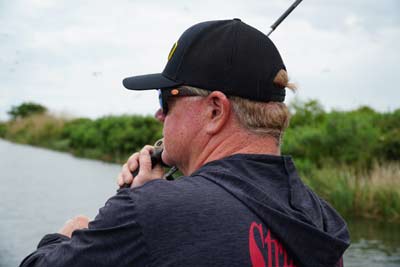
Mark Rose likes to look beyond a target before making a cast to get the best placement of his lures.
"It may not make sense at first, but I like to look well beyond the target when making a cast," he said. "When you are trying to get near a bush, dock, or little opening, I look past that and make a target at something beyond that. That way, you're not worried about getting it right there and can lead your cast like a quarterback does to a receiver and bring that bait right to the target."
Hackney says it's all about line and lure control and that it helps with accuracy and distance.
"It's all about the technique, and you don't want to reel your lure up to the rod tip," he said. "It's about line control and safely casting with 3 or 4 feet of line hanging out. Your form and practicing like that will let you make longer casts and help you be more accurate."
Skipping Accuracy
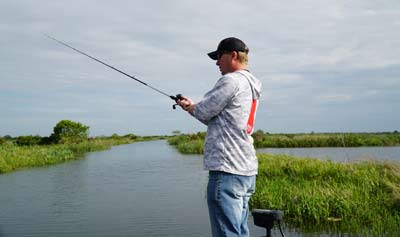
Placing a bait in the right spot is critical for short-range fishing to get more bites. Of course, this is true of all of the techniques, but skipping under cover is something that South Carolina's Andy Montgomery is known for, and he's the best, according to many of his peers.
Montgomery started by saying that nothing beats practice and repetition, but there are some things you can do to get better.
"Skipping is all about rod angle, and you never want to sidearm it," he said. "It's more of a 45-degree angle to the water to get the best skip. I see many anglers try to force it, but it's a smooth cast with the right rod angle that makes the best skips."
The Right Gear
Rods and reels are critical parts of casting and have a significant impact on how far you can cast and how accurate you can be. A simple thing that Rose does to throw further is to fill his reel correctly.
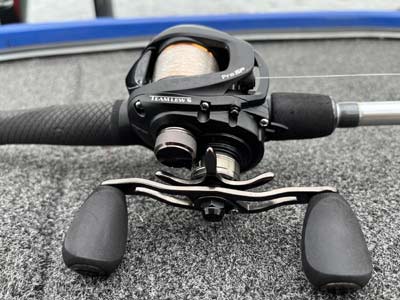
"Having a spool full of line makes a huge difference in distance and accuracy," he said. "An underfilled reel just won't cast as far. So you always want to ensure it's filled, and you can use some old line as backing so you don't have to add as much line every time you re-spool."
Montgomery says the rod and reel are equally crucial for casting distance and accuracy.
"A longer rod helps, but more importantly, it should be a rod that loads throughout," he said. "You'll do better with a rod that's not just a soft tip. I also like a reel with a wider and deeper spool for casting distance because it holds more line and will cast further."
For skipping and pitching, it's the opposite, and he likes a reel with a shallow spool like the Team Lew's Pro SP.
"Backlashes come from line deeper in the spool, and having one with a shallow spool is great for skipping," he said. "It makes a world of difference for accuracy."
One often-overlooked aspect of bass fishing is simply casting accurately and at the proper distance. Of course, the simplest way to get better is to practice, but the above tips will speed up the process and help you catch more fish.


